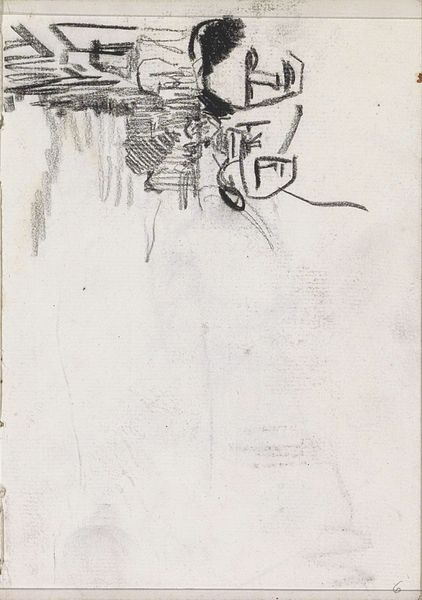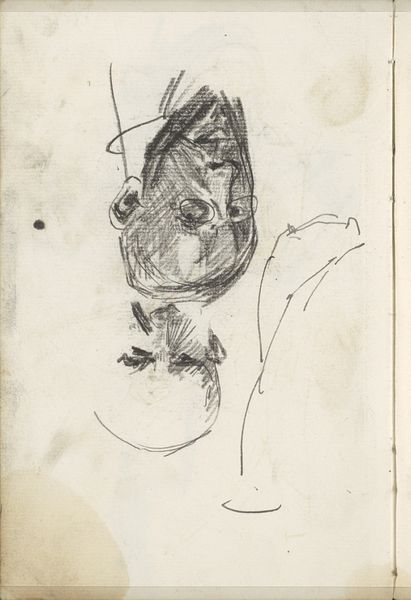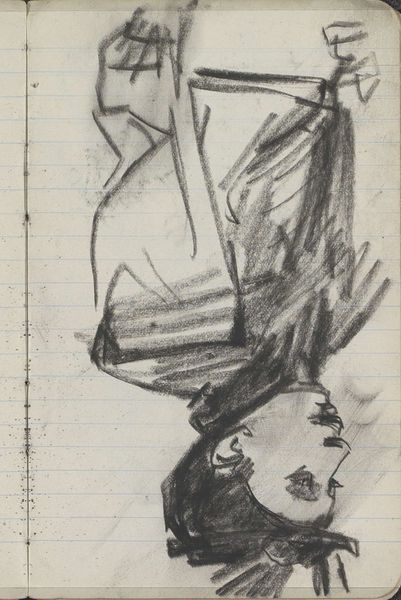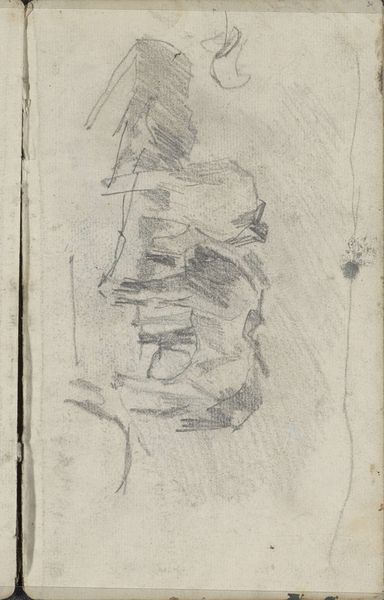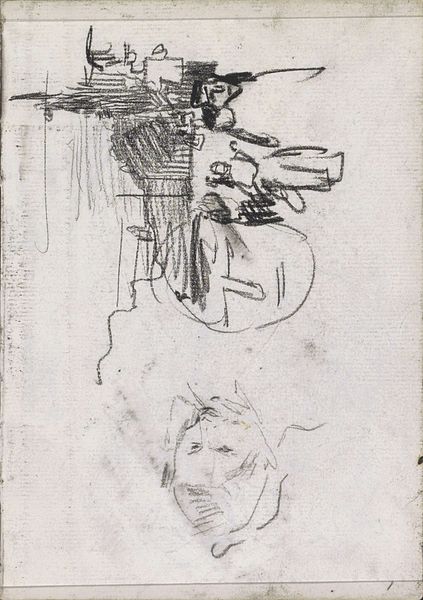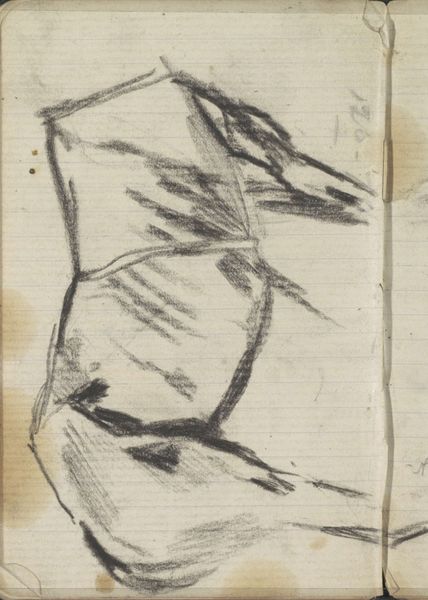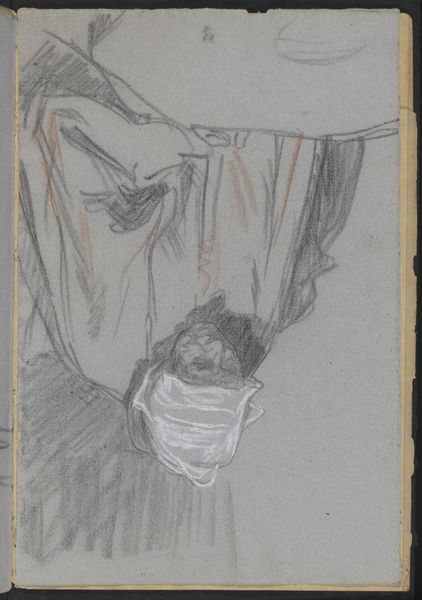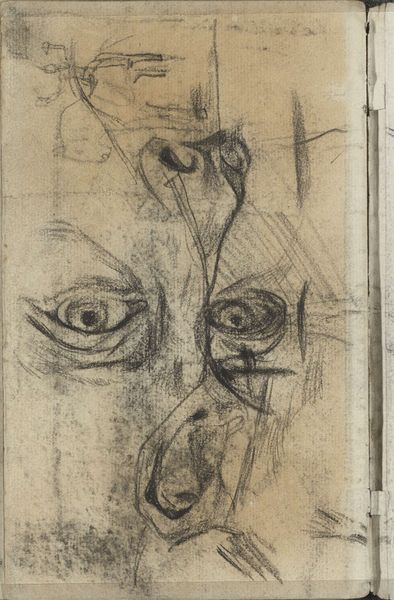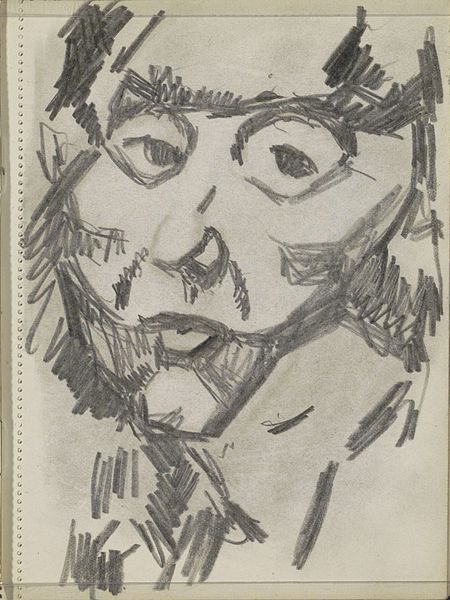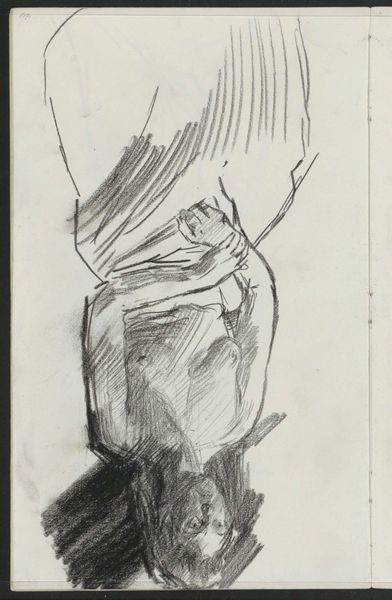
Copyright: Rijks Museum: Open Domain
Editor: This is "Vrouwenhoofd," or "Head of a Woman," by Isaac Israels, a pencil drawing that historians place somewhere between 1886 and 1934. It's quite gestural, a quick sketch really, and kind of melancholy. What do you see in this piece? Curator: I see layers of cultural memory embedded in this seemingly simple sketch. The very act of portraiture, even in this informal style, speaks to a deep-seated human desire to capture and preserve identity. But observe *how* the artist chooses to represent this woman. Editor: Her gaze is averted, isn't it? And the lines are so sketchy, as if she’s about to disappear. Curator: Exactly! Averted gazes are powerful symbols of interiority, perhaps hinting at introspection or even a sense of social constraint during the period in which this drawing was made. Israels was working during a time of immense social change, and the woman's face feels evocative. Do you feel this captures the psychological climate of the fin de siècle? Editor: Possibly. It also feels so…fleeting, like a memory fading away. Or that the woman perhaps was turning her head to avoid the gaze. Curator: Yes, that inherent fragility in pencil portraits lends it that melancholic affect. Each line carries the weight of intention and execution, reflecting Israels’s psychological state. It serves as a lens through which we can view both the artist's mind and the society that produced him. There is emotional and psychological tension held here. Editor: So it's not just a sketch of a woman’s head but a symbol of cultural and personal experience. Thank you. That gave me a whole new perspective. Curator: My pleasure. And remember that art invites dialogue and interpretation. Always trust your instincts and explore the depths of your own cultural understanding.
Comments
No comments
Be the first to comment and join the conversation on the ultimate creative platform.
